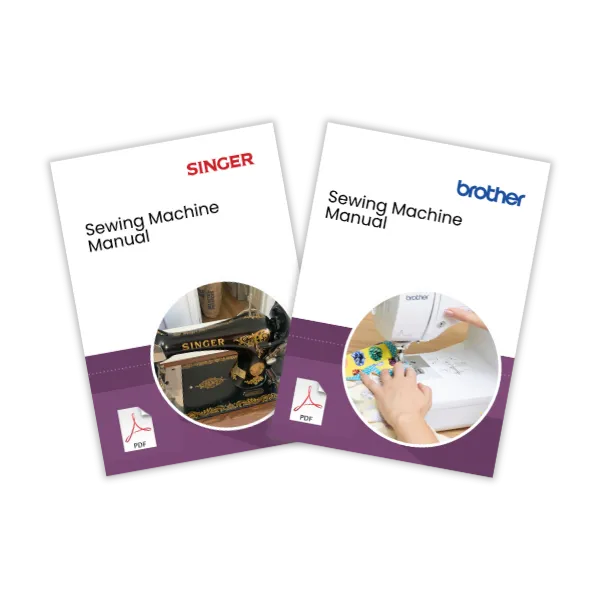Top 10 Vintage Sewing Machines That Still Hold Up Today
Vintage doesn’t mean outdated — especially when it comes to sewing machines. Some of the most reliable, smooth-running, and beautifully engineered machines ever made came off the production line decades ago. In fact, many seasoned sewists swear by them.
Whether you’re a collector, hobbyist, or simply love quality craftsmanship, here are 10 vintage sewing machines that still hold up — and how to find the manuals that keep them humming.
1. 🧵 Singer 66K
The Singer 66K is a legend. Produced in the UK from the early 1900s through the mid-century, this cast-iron machine is built like a tank — and stitches like a dream.
- Known for: Smooth straight stitching, ornate decals, side-loading bobbin.
- Ideal for: General sewing, vintage lovers, restoration projects.
- Get the manual: Singer Manuals
2. 🪡 Singer Featherweight 221
One of the most collectible sewing machines ever made, the Featherweight 221 was introduced in the 1930s and remained in demand for decades.
- Known for: Lightweight portability, quiet motor, beautiful straight stitch.
- Ideal for: Quilters, travelers, vintage enthusiasts.
- Get the manual: Singer Manuals
3. ⚙️ Brother 2600 Series (XL & VX)
Brother’s 2600 and VX series from the 1970s–80s still impress with their mechanical reliability and no-fuss performance.
- Known for: Simple mechanics, strong motor, basic utility stitches.
- Ideal for: Beginners, utility sewing, retro fans.
- Get the manual: Brother Manuals
4. 🧷 Elna Supermatic
The Elna Supermatic, introduced in the 1950s, was one of the first zig-zag machines with interchangeable cams for decorative stitching — and it still works beautifully today.
- Known for: Swiss engineering, cam-driven decorative stitches, unique green casing.
- Ideal for: Decorative work, crafters, retro machine collectors.
- Get the manual: Elna Manuals
5. 🔩 Janome 672 (and 600 Series)
Janome’s mechanical machines from the 70s and 80s are nearly indestructible. The 672 and its cousins in the 600 series offer smooth performance with essential features.
- Known for: High stitch quality, user-friendly controls, metal interior parts.
- Ideal for: Dressmaking, home repairs, everyday sewing.
- Get the manual: Janome Manuals
6. 🛠 Juki TL-98 and Predecessors
Though not strictly “vintage,” the Juki TL series (and earlier mechanical straight-stitch models) are legendary for their industrial feel in a domestic body.
- Known for: Precision stitching, high speed, metal construction.
- Ideal for: Quilting, heavy fabrics, production sewing.
- Get the manual: Juki Manuals
7. ⚙️ PFAFF 1222
The German-made PFAFF 1222 is a masterpiece of mid-century engineering. Featuring IDT (integrated dual feed), it still competes with modern machines for precision.
- Known for: Dual feed system, durability, advanced features for its era.
- Ideal for: Garment making, precision sewing, heavy fabrics.
- Get the manual: PFAFF Manuals
8. 🧰 Toyota RS2000
Yes, Toyota made sewing machines — and the RS2000 series from the late 70s/early 80s are a hidden gem. Simple, effective, and built to last.
- Known for: Reliability, smooth mechanical action, unique design.
- Ideal for: Repairs, upholstery, everyday projects.
- Get the manual: Toyota Manuals
9. ✨ Singer 201K
Another heavyweight classic from Singer, the 201K is often called the best straight-stitch machine ever made. It runs quietly and powers through layers with ease.
- Known for: Silent rotary hook, high build quality, smooth stitch.
- Ideal for: Tailoring, denim, high-volume work.
- Get the manual: Singer Manuals
10. 🪛 Elna Grasshopper
The Elna Grasshopper (from the 1940s) is beloved for its compact, curvy design and beautiful straight stitch. It’s one of the few green-painted machines of the era.
- Known for: Unique styling, portable case, long-lasting design.
- Ideal for: Travel, vintage decor, basic sewing.
- Get the manual: Elna Manuals
🧠 Why Vintage Machines Still Matter
Vintage machines have stood the test of time for a reason:
- Built to last: Heavy-duty metal parts outlast plastic.
- Easier to service: No computer chips or proprietary boards.
- Better for basics: Straight stitch and zig-zag are often all you need.
- Eco-friendly: Reuse, restore, and revive instead of buying new.
🧾 Need the Right Manual?
Many of these machines didn’t come with their original manuals — or they’ve been lost over the years. That’s where we come in.
You can browse our full collection of scanned and printed manuals here:
- Singer Manuals
- Brother Manuals
- Janome Manuals
- Elna Manuals
- Juki Manuals
- PFAFF Manuals
- Toyota Manuals
🔚 Final Thoughts
If you’re lucky enough to own one of these vintage machines — or are thinking about restoring one — make sure you’ve got the right manual by your side. It’s the key to unlocking all the features, settings, and care tips that keep these classics running for decades to come.
Want help identifying your machine or finding the right manual? Just get in touch — we’re happy to help!

